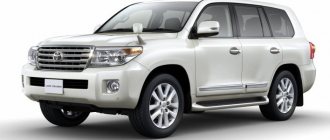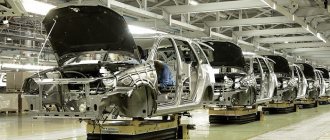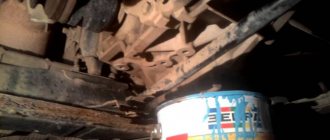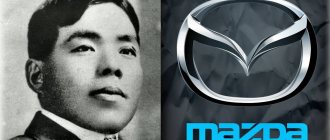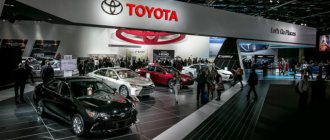A little history
The concept of intelligent automation, also called jidoka, originates from the looms made by Sakichi Toeda, the founder of the group.
Traditionally, weaving had to be done by hand: weavers passed a horizontal thread between vertical ones - back and forth. Sakiti saw his mother working on a handloom and thought about how he could make her work easier. As a result, he invented the hand-powered loom in 1890 - 50% more efficient than the previous one. The operator could switch the yarn feeder with one hand and simultaneously lower the horizontal threads. In 1896, Sakiti made the first power loom and began introducing improvements one after another. In 1924, he and his son Kiichiro made a historic breakthrough - they invented the world's first high-speed loom, which consistently fed new horizontal thread without interrupting work.
Sakiti's developments have made it possible to create machines that stop automatically when problems arise - machines that will not produce defective products and do not require constant operator supervision.
Working with his father on the Model G loom, Kiichiro helped introduce a system of mass production. In 1926, he founded the Toyota Automatic Loom Works company, introducing the American linear assembly method for the production of Model G looms. In 1929, Kiichiro visited Europe to find those willing to buy licenses and technology for the production of automatic looms. He was greatly impressed by the US highways, and he became determined to produce automobiles. They tried to convince him, they said that Japan does not have such technologies and there are still too few roads. He ignored his doubts and set up a compact engine workshop in a weaving loom factory. In 1930, Kiichiro Toeda created an automobile company.
more details
ProQuality: Are production standards developed specifically in Japan or is it a collective effort among Toyota employees around the world?
N.K.
: I would say that this is more a result of the collective efforts of Toyota around the world. Both in terms of standards and in terms of kaizens and various karakuri mechanisms that we implement in our production. Employees from different Toyota plants share ideas with each other, so it's more of a team effort.
The culture of quality is inherent not only in Japan, but throughout the world
To be more precise, the initial standard is set in Japan, when, for example, designers create a new model. Then in production it is improved, finalized and turned into a new standard. It's a constantly repeating cycle.
ProQuality: TPS also applies to working with suppliers who are included in the production chain. How does Toyota weave them into its production system in Europe and, in particular, in Russia?
N.K.
: Work with our suppliers is mainly based on the “just in time” principle. The main tool for its implementation is the kanban system. We also train our suppliers in our other principles, such as jidoka. This allows us to improve the efficiency of collaboration.
ProQuality: Tell us, what is the difference between Toyota production and other car factories in Russia?
N.K.
: As I already said, the difference is that we, Toyota, put people at the center, we place the main emphasis on our people. A Toyota employee uses his intellectual potential. This is expressed in the fact that he can independently identify deviations from the standard and press the andon button - he is not afraid of this responsibility. At the same time, employees not only follow ready-made standards, but also propose improvements and kaizens.
We create a culture in the organization in which people can and strive to use their intellectual potential
And I’ll add that our production in Russia is very self-sufficient. That is, the production site can rely on its own strength in solving complex problems.
For more information about the treatment of employees at Toyota, read the article by Jeffrey Liker on our portal
ProQuality: What are the main differences between Toyota production in Russia and Japan?
N.K.
: Perhaps the menu in the canteen differs and, perhaps, the eye color of the employees. This is the main difference. As for standardized work, it is absolutely the same at Toyota factories in Japan and Russia. The quality here and there is at a high level. In Russia, the level of ability to implement kaizens on the production site is very high. I would like to note that in terms of this indicator, the plant in St. Petersburg last year took first place among Toyota’s European plants, and I am very proud of it.
Read about mentoring at Toyota on our portal in the article “The Toyota Way: follow the principle of “live and learn”
ProQuality: What could be the reason for reworking and updating a particular approach or tool at Toyota?
N.K.
: This is the pursuit of kaizen. We constantly strive to improve our product and improve our overall performance. And from the moment the original standard is created, it immediately begins to be revised.
For example, our unmanned carts, which were developed by employees of the plant in St. Petersburg: the principle of their operation implies a complete lack of human involvement in the process. We first introduced their use to transport bumpers along the production line. Later, a proposal was made to use this idea for other parts - for thresholds, for example.
One improvement always leads to the next
Another example is from the painting shop: on the cataphoresis application line there was a problem with metal dust that settles on the bodies in the welding shop. To achieve a high level of body paint, this metal dust should not be present. We have always been faced with the task of solving this issue as efficiently as possible in order to remove it completely. In the UK and Japan we used the bubble method. That is, the body was immersed in a bath with a cataphoresis solution, and due to microbubbles, metal particles rose to the top, then collected from the surface. Russia went further. Employees of the plant in St. Petersburg, using a scientific approach, using a certain formula, calculated what the optimal volume of an air bubble should be in order to remove the maximum amount of dust. And we implemented this kaizen.
ProQuality: It is my understanding that Toyota always makes thoughtful and informed decisions. But the age of digitalization forces us to speed up and, accordingly, make certain decisions faster. How is Toyota adapting to this – the company and production in Russia in particular?
N.K.
: The Toyota Production System and digitalization go hand in hand. If we are talking about our suppliers, then daily management of work with them is carried out according to the “just in time” principle and using the electronic kanban system. Suppliers immediately receive electronic Kanban “cards” over the network and instantly understand what we need.
2021 Toyota Land Cruiser: 5 Things You Need to Know
A 65-year-old legend, the 2018 Toyota Land Cruiser receives a number of exterior and interior styling updates but remains unique in the segment for its ability to combine outstanding quality, durability and reliability with unrivaled off-road capability. performance and even higher levels of luxury, comfort and prestige of ownership.
Here are five key things we think you should know.
1.UK Utility grade
Toyota UK customers have a wider choice of Land Cruiser models with the introduction of an expanded range that includes a new, simpler Utility grade.
Available in three- and five-door formats, it comes with 17-inch steel wheels, roof rails, front fog lights, air conditioning, dusk-sensing headlights, cruise control, smart entry and a six-speaker audio system with CD player. , Bluetooth, Aux-in and USB port. A six-speed manual transmission can be specified on the five-door version and is standard on the three-door model.
The three-door/five-seat Land Cruiser Utility is priced at £32,795, with the five-door version starting at £34,095. You can spec a five-door Land Cruiser with a six-speed automatic, and this model costs from £35,795.
Great SUV
unrivaled off-road capabilities
are based on its highly durable and flex-resistant body-on-frame design, which is now unique in the large SUV segment. The vehicle's combination of strength and durability provides a high level of damage protection and ease of maintenance and repair. Significantly reduced body torsion levels help the driver optimally position and control the vehicle.
The body-on-frame design also effectively isolates the cabin from suspension impacts, making even the most challenging off-road conditions more comfortable for everyone on board.
All-terrain assistance systems help even untrained drivers get the most out of the Land Cruiser's off-road capabilities. They also make Toyota one of the most technically advanced, safe, fun and easy-to-use four-wheel drive vehicles in the world.
No other SUV offers the Land Cruiser's combination of off-road performance and on-road performance. Its powerful road presence and high level of on-board technology distinguish it as a premium 4x4 with the perfect balance of capability, comfort and refinement. Wherever you want to go, Land Cruiser will take you there - and back.
Land Cruiser by numbers
The Land Cruiser currently has the longest operating history in the Toyota lineup. The name "Land Cruiser" originates from the Toyota Jeep BJ, created in 1951, and the "Land Cruiser" name has been used since the release of the 20 Series in 1955.
The Land Cruiser is more affordable than any current Toyota model and is sold in more than 190 countries. Its unrivaled off-road capabilities have earned it an impeccable reputation as one of the toughest and most reliable SUVs in the world and has made it a top seller in more than 10 European countries.
New colors for the new season
In the UK, the new 2021 Land Cruiser is available in nine exterior colours, including the new Phantom Blue and Avant-Garde Bronze metallic.
Advanced Security Features
versions
of the new Land Cruiser feature active Toyota Safety Sense technologies that help prevent accidents or mitigate the consequences of a collision.
It includes a Pre-Collision System (PCS) with Pedestrian Detection, Adaptive Cruise Control (ACC), Lane Departure Alert (LDA) and Automatic High Beams (AHB). Additional driver support is provided by a blind spot monitor with rear cross-traffic alert (Invincible grade) and an updated tire pressure warning system.
Full details of the 2021 Toyota Land Cruiser price and specifications can be found at Toyota.co.uk
.
curious
In order to produce products on time, Toyota uses the heijunka principle - aligning the production process in accordance with demand.
Among other things, this allows you to avoid overproduction - the most important type of loss, entailing the rest. The batch size at Toyota is one unit of production. If we talk about market demands, this part of our work is also digitalized. We receive orders electronically, we have the opportunity to understand where and what product stocks are available and how to manage them.
On the one hand, there are digitalized relationships with the market, and on the other, with suppliers. This allowed us, in particular, in the conditions of the covid year, to adapt better than anyone else to new demands from the consumer and produce only what was necessary. Therefore, now, during the recovery period, our share in the world market is growing faster than anyone else.
ProQuality: How does the era of robotization affect your production? Do you adapt your famous instruments to modern realities and how? Please give examples.
N.K.
: Toyota is a company that was one of the first to introduce robots into its production when it was all just in its infancy. And I think that we are now one of those companies that most effectively combine robots and people on the same production line. This makes it flexible. Such a production line can respond well to fluctuations in production volume and specifications, and variations in the products produced.
Lots of robotic equipment. And it is important for us, following the principles of the production system, to ensure maximum flexibility and efficiency of its use
Let’s say that when introducing a robot in production and when calculating investments, we proceed from a cycle time of 60 seconds per car. Suppose there is a fluctuation in market demand, and we are forced to change the speed at which the line travels. We start producing products within 40 seconds. 20 seconds are freed up, and in ordinary companies this time the robot will be idle. We are rebuilding it in such a way that it works for these 20 seconds. For example, we are retraining him. If it is a welding robot, we add some tools and devices so that it can perform other operations: for example, transfer a workpiece from one process to another. As a result, his time is fully utilized and the investments we made are spent.
ProQuality: Which TPS tools are being implemented the fastest and best in Europe?
N.K.
: The easiest thing is to implement standardized work and the most difficult thing is to maintain it. It is very difficult to implement the principles of jidoka and andon, which imply that the operator has the right to stop the line if it deviates. People are not used to this. Nevertheless, in Russia these principles are fully implemented.
Jidoka and Just-in-Time are the basis of TPS
ProQuality: What happens when an employee presses the andon button or the equipment stops automatically according to the jidoka principle?
N.K.
: Andon is pressed when some deviation occurs in the process. The operator thus gives a signal, which is immediately sent to the display. It shows at which station, in which process of the production line, the deviation occurred. It is also visualized why the signal appeared on the display, be it a lag in the operation or the activation of the poka-eke - error protection device.
Many people, when talking about TPS, mistakenly think that “just in time” is the primary principle. We ourselves put the jidoka principle first and perceive ourselves as a jidoka company
The operator, since his task is to accurately carry out standardized work, in case of deviation must do three things: stop, call, wait. After pressing the andon button, it returns to its original position. The foreman, whose responsibility it is to assist the operator in performing the standardized work, comes in and resolves the problem, making sure that safety and quality are ensured.
Then, when the problem is stopped and the line is working again, a mechanism is launched to find the root cause. The employee responsible for the site finds the reason. He has complete information about all problems thanks to the andon system. He analyzes the signals received from this or that line, looks at what they were connected with: perhaps there is a problem in the design of the part being installed or in the way the work process is structured, or maybe it is a problem related to the equipment. As a result, countermeasures are identified to prevent this from happening in the future.
ProQuality: How long does it take to fix the problem from the moment you press the andon button?
N.K.
: It very much depends on the process and the site where it happens. According to statistics, the foreman appears at the scene of the call within a few seconds and, as a rule, resolves the problem within a minute and resumes operation of the line.
ProQuality: When organizing TPS at production facilities in different countries, does mentality play any role? Have you encountered the fact that the system is impossible to implement due to the fact that the local society has a certain mentality that cannot be reformed?
N.K.
: Of course, the mentality and culture differ in different countries. It is clear that people in southern Europe and from Latin American countries will differ in character from residents of northern Europe or Russia, where the climate is harsher, colder. But this does not affect the implementation of TPS much, because we create a production system culture of the same standard. We create a culture where standardized work is inherent, and there is an opportunity to improve it by visualizing deviations and implementing kaizens. And we involve the entire supply chain in this culture. That is, it covers the entire production process.
I have worked in North America, Canada, Indonesia, Thailand and other countries and I cannot say that mentality was an issue when implementing TPS
Where are the tenth and eleventh generations of the car assembled?
The tenth generation car, released in 2010 for the European and Russian markets, was assembled exclusively at the Japanese Takaoka production facility. This was due to the fact that Toyota management was dissatisfied with how this model was assembled in Turkey, the car began to differ greatly in quality from the Japanese assembly.
Starting in 2010, the automaker began to completely modernize the assembly line in the Turkish city of Sakarya, where the previous Toyota Corolla was assembled, which was done to prepare it for the release of the eleventh generation model in 2013, intended for European countries.
It is for this reason that all cars of the tenth edition supplied to Russia, including the restyled versions of 2012, were produced only in Japan. This continued until the complete renewal of the production capacity of the Turkish conveyor, which began operating in mid-2013 and began production of the latest generation of the E170 model.
It is almost impossible to distinguish the quality of the eleventh generation car assembled in Turkey, as well as its restyled version in 2021, from those assembled in Japan; they fully comply with all the manufacturer’s requirements for the reliability of structural components and assemblies.
Partnership in Russia
N.K.
: The automotive industry has one peculiarity - companies in this industry need to have many partners involved in the process, actors, without whom it will not be possible to develop. If a company does not contribute to the long-term development of the social environment of the country where it operates, then it will not be able to be competitive.
Two things are important for us in the long term. The first is to create a strong supplier base. For example, as part of this activity in Russia, together with suppliers, we work to improve their production and promote various kaizens. As an example, I will give the creation of model lines at the plant of our supplier “Gestamp” as part of the national project “Labor Productivity”. As a result of joint work, we were able to improve the situation in such a way that they began to produce the same amount of products using two shifts instead of three, while significantly optimizing the number of processes.
The second direction is contribution to the development of people in the long term. Here I would include our cooperation with the Polytechnic University and with the Federal Competence Center, where we help develop strong leaders, in the future – leaders in increasing productivity. I would draw an analogy here with agriculture, when a peasant works on his land, waters it, fertilizes it, prepares it in advance for some kind of agricultural work. At Toyota, we also prepare the ground to ultimately achieve better results.
more details
Was the article helpful? No
print the article
Car production in Turkey
For many years, owners and simply fans of this model were interested in where the Toyota Corolla, which is used in Russia and neighboring countries, is assembled. Most of these cars come to us from Turkey. The city of Sakarya has become the automotive center of Toyota in Turkey. It is expected that in 2015 the threshold of 150,000 vehicles produced will be exceeded. They assemble and supply cars to more than 50 countries.
Türkiye and Japan have long been partners in the production of these machines. Their cooperation began back in 1996 with the assembly of the seventh generation Toyota. The production and assembly rates at this plant remain high, making it one of the best in Europe.
Important!
Using this device, the driver will be able to monitor engine operation, fuel consumption and other points of interest. At the same time, significantly saving a significant amount of money on the services of specialists...
Model assembly in different countries
Let's start with the fact that the ancestral home of the car is Japan. However, from 1996 to 2012, more than forty million Toyota Corolla units were sold in various body modifications.
To accomplish this, the Japanese had to open production in the following countries:
- Russia
- Türkiye
- England
- Canada
- China
- Brazil
- India
- Malaysia
- Taiwan
- Venezuela
- Philippines
- South Africa
- Pakistan
- Indonesia
Production of Toyota Camry at the St. Petersburg plant
In 2005, Toyota entered into an agreement with the Russian government to build an automobile plant in St. Petersburg, more precisely in its industrial zone. Production began in 2007. The product produced was a Toyota Camry. The production volume began with 20 thousand cars, and in the future it was planned to increase this figure to 300 thousand cars per year. The produced cars were intended for the Russian market.
But this never happened and production began to decline over time.
Thus, in the first half of 2014, only a little more than 13 thousand cars were produced. During the same period in 2013, 1.5% more cars were produced. Where are they, these 300 thousand cars that the manufacturers were counting on? Toyota Camry cars, in order to maintain sales volume, began to be supplied to Kazakhstan and Belarus. At the very beginning, more than $150 million was invested in this project.
More on the topic:
Most recently, Toyota has completed the creation of new stamping workshops. It is also expected that in a few years the assembly of the Rav 4 crossover will begin at the St. Petersburg plant. True, there is reason to doubt the effectiveness of this company, whether everything will turn out the same as with the Toyota Camry. Many did not like the quality of assembly carried out in Russia.
Production in St. Petersburg
Cooperation between Japan and Russia to establish the production of Toyota Corolla began with the construction of a plant in 2005. The Leningrad region was chosen as the location for the construction of the car assembly plant. This place was Shushary, where the first Toyota Corolla was assembled in 2007.
Important!
Many drivers have encountered vehicle error alerts.
It is impossible to decipher them on your own; you have to carry out diagnostics at a maintenance facility, and this costs a lot. Now, using this device, you can figure out for yourself what this or that code means... The company employs about 2 thousand people.
Workers undergo training and internships at automobile production facilities in Japan. The workshops carry out welding, painting of Corolla bodies, and also assemble them until they are fully operational. Product quality requirements are similar to those of factories in Japan. In 2013 alone, more than 35,000 vehicles left the company's gates. Toyota Corolla is one of the popular models among modern buyers. The reliability of its operation, simplicity and at the same time stylish design attract attention. The Toyota automaker itself is considered perhaps the leading automotive giant in the world, but there are many discrepancies regarding where the Toyota Corolla is assembled. And this is not surprising.
Technical characteristics of Toyota Corolla in 2015
In technical terms, Japanese cars are completely clear. In this regard, Corolla offers quite a large number of technical equipment. The base engine of the car remains from the 10th generation City version. This is a 1.33-liter power unit, which without a turbine is capable of achieving 99 horsepower and quite a dynamic ride for a Corolla. But in some situations, particularly highway overtaking, this engine is a little weak. Therefore, many will prefer a 1.6-liter unit with 122 horsepower or a top-end 1.8-liter engine with 140 horsepower. In general, the situation with technology is as follows:
- three power units from 99 to 140 horsepower - an excellent line-up for the Corolla;
- the base engine is available only with a manual, the most powerful - only with an automatic;
- For the average power unit, both manual and automatic transmissions are available;
- configurations greatly change the feeling of the ride and the technical potential of the car;
- the technological equipment has many options that are comfortable and necessary for the driver;
- Each car can be customized for yourself by equipping it with the necessary equipment;
- Additional equipment items can be purchased for money; there were a lot of these items.
Today you can enjoy a wonderful ride in a truly Japanese car, albeit in Turkish assembly, without any worries about quality. The car will help you understand all the features of modern transport, show you new developments by Toyota and delight you with its futuristic appearance. The design of Corolla has remained relevant and unexpected for two years now. It must be admitted that Toyota is doing quite well in sales. The car is sold very actively in Russia, thanks to its history and quite interesting technical characteristics. Detailed customer reviews about the car have also begun to appear, which further motivate buyers to give their preference to the Corolla. Watch a fascinating Toyota test drive:
